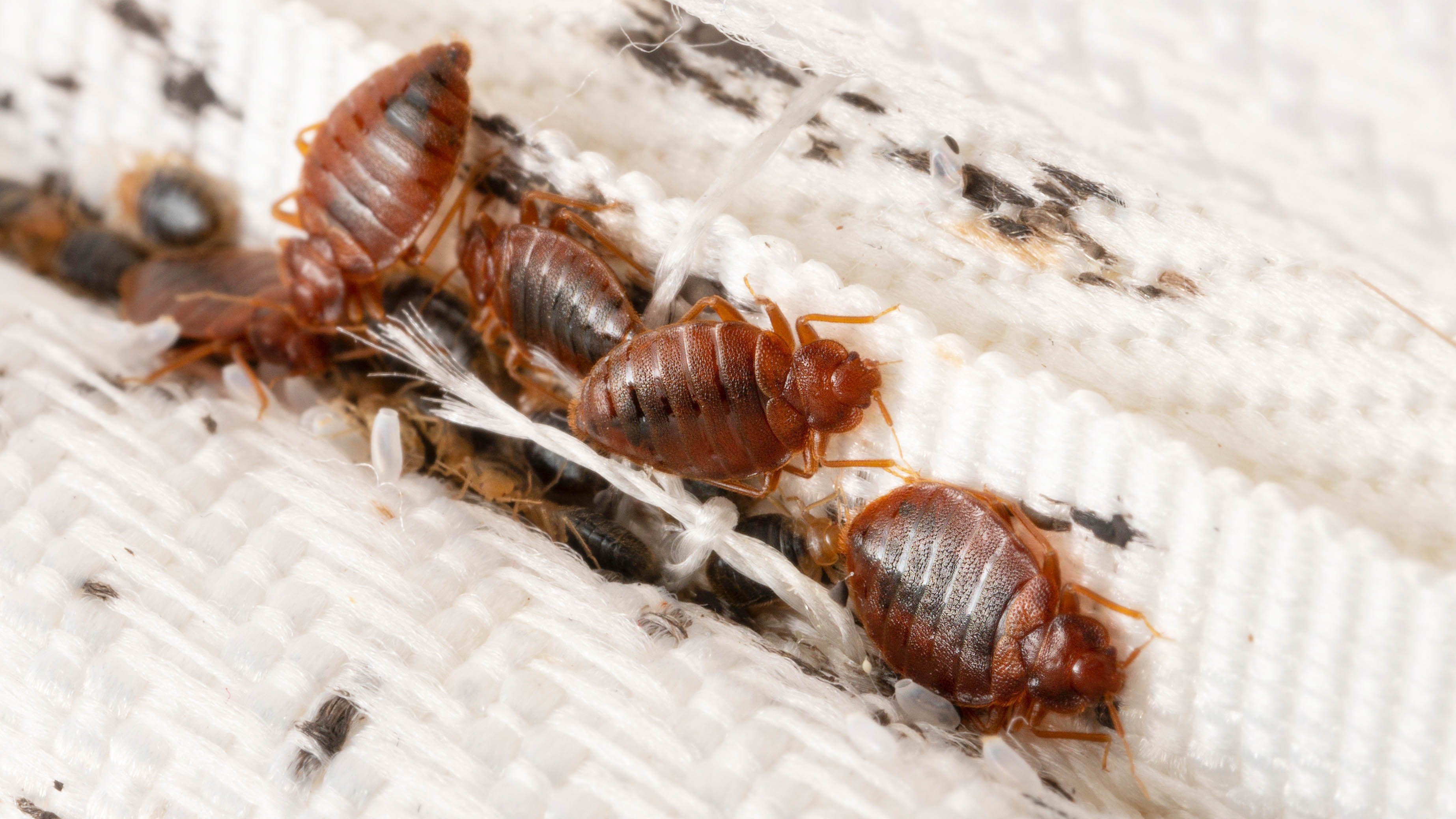A bed bug problem needs to be dealt with quickly, especially if they've invaded your mattress. One garden essential is often touted as a non-toxic and effective form of pest control but can diatomaceous earth kill bed bugs?When applied to bed bugs, diatomaceous earth dries them out while piercing the exoskeleton for effective pest removal. And it's cheap, with food grade diatomaceous earth sold at most hardware stores.
Even though this process can be slow going — you have to wait patiently for every bed bug to wander into your trap — here's why we recommend diatomaceous earth for getting rid of bed bugs.Does diatomaceous earth kill bed bugs?(Image credit: Shutterstock)Diatomaceous earth is a natural rock consisting of fossilized aquatic organisms (known as diatoms, hence diatomaceous earth.) This rock is then crumbled to form a fine powder which can be used as pest control.

When diatomaceous earth comes in contact with insects, such as bed bugs, it absorbs the moisture from the exoskeleton, causing them to dry out and die.In powder form, diatomaceous earth also has sharp edges (albeit, microscopic.) These abrasive edges puncture the exterior of bed bug shell, to speed up the killing process.
Diatomaceous earth isn't just effective bed bug removal; it can be used to kill a variety of household pests. If you're trying to get rid of carpet moths or fight off flying ants, diatomaceous earth is a potential solution.How to use diatomaceous earth to kill bed bugsUsing diatomaceous earth to kill bed bugs is a simple process and it doesn't require any specialist skills.
Our number one tip? Bed bugs can get practically anywhere, so you need to be liberal with your application. Just because you haven't spotted any bed bugs in your base boards doesn't mean they aren't hiding there, waiting for you to fall asleep so they can tuck in.1.
Prepare the roomRemove any bedding from the mattress, wash and dry it at a high temperature and place in a sealed bag. Remove other soft furnishings and clothing from the room and bag them as well (to prevent bed bugs from spreading.)(Image credit: Future)Pull your bed away from the wall and clear up any clutter — bed bugs love to hide in dark crevices.
Vacuum your mattress and the surrounding area, making sure to get into the nooks and crannies. Empty the vacuum canister away from the house.2.
Apply the diatomaceous earthWe recommend wearing a dust mask and gloves when using diatomaceous earth, so first things first, get yourself ready.Once you're properly prepared, begin sprinkling a layer of diatomaceous earth onto the surface of the mattress, across the bed frame and under the bed.In addition to the mattress, apply diatomaceous earth to the area surrounding the bed, such as the base boards and the window sill.
Essentially, any cracks and crevices where a bed big might hide.3. Work the diatomaceous earth into the seamsTaking a bristle brush, gently rub the diatomaceous earth into the seams and corners of your mattress.
Bed bugs are particularly likely to gather in these areas, so you want to ensure a good coating.As a final step, consider placing a circle of diatomaceous earth around the mattress. This means any bed bugs traveling towards their feeding grounds will come into contact with the substance.
4. Wait and replaceOnce a bed bug has touched diatomaceous earth it kills them quickly and the substance doesn't lose efficiency over time.However, as contact is required it can be a slow process.
You need to wait for all the bugs to come across the diatomaceous earth. We recommend waiting seven to 17 days, for the best chance at total removal.In the meantime, vacuum every few days and replace any of the earth that has been disturbed by movement (primarily, on the carpet.
)(Image credit: Shutterstock)Diatomaceous earth is non-toxic, which means you can sleep on a mattress that's been treated with it. However, we recommend investing in a good mattress protector and a fitted sheet, to prevent disturbing the dust.Using the mattress during treatment can actually be advantageous, as you presence is likely to draw the pests towards the bed — sorry, you're live bait.
However, the fine particles of diatomaceous earth can cause respiratory issues if breathed in excessively. If you can, either open a window or sleep somewhere else (just keep in mind, the bed bugs might follow you.)Disadvantages of using diatomaceous earth to kill bed bugsDiatomaceous earth is an effective method for killing bed bugs but it does have some drawbacks.
For a start, you need to exercise patience. Wrongly assuming the diatomaceous earth has finished the job and going to town with the vacuum cleaner will grant free rein to any remaining bed bugs.(Image credit: Shutterstock)Diatomaceous earth can cause irritation if inhaled, so you want to avoid disturbing it once in place.
That means once applied it to your mattress, you may want to sleep elsewhere.If you're a pet owner, diatomaceous earth is largely considered safe for use around pets. However, consider shutting the door to any rooms you've sprinkled earth in (in case your nosy cat undoes your hard work.
)Where to buy diatomaceous earth for bed bugsIf you're not an avid gardener, this might be the first time you've come across diatomaceous earth. But although it sounds like a specialty purchase, it's widely available in hardware stores — and inexpensive.There are two types of diatomaceous earth: pool grade (also known as garden grade) and food grade.
For bed bug removal, use food grade diatomaceous earth. This has a lower percentage of crystalline silica (which can be harmful if inhaled) making it safer for indoor use.Food Grade Diatomaceous Earth: from $8.
99 at AmazonWidely sold at hardware stores and available online, food grade diatomaceous earth is an inexpensive bed bug killer with various pest control uses. View DealOther methods to kill bed bugsBed bugs are typically bought into the house from outside; for example, bed bugs might hitch a ride in your suitcase.Once inside your home, they can spread quickly.
Which is why if you suspect a bed bug outbreak, you need to treat it fast. These methods can help you control an outbreak before bed bugs have spread throughout the house.Vacuum your mattress: Take care to get your vacuum nozzle into the seams of the mattress and don't forget the underside.
When you're done, empty the contents into a bag and dispose far from the house.Treat them with high temperatures: Bed bugs hate heat so a hot wash can kill pests hiding in your bedding. We recommend a temperature of at least 140F for 90 minutes, followed by a hot spin (or drying in the sun.
)Or low temperatures: Turns out, bed bugs don't like temperature extremes of any type. Seal your bedding in a bag, place it in the freezer and leave it for several days. Then pop it in the wash.
Spray tea tree oil: Best used for small outbreaks, it's thought tea tree oil can kill bed bugs when sprayed directly on them. However, it should not be used around pets.Contact the professionals: Bed bugs are fast, hardy and very good at hiding — some outbreaks can only be treated with professional help.
Technology

Bed bugs in your mattress? Experts say this $10 garden product gets rid of them fast

We explore if diatomaceous earth can kill bed bugs and how to use it.















